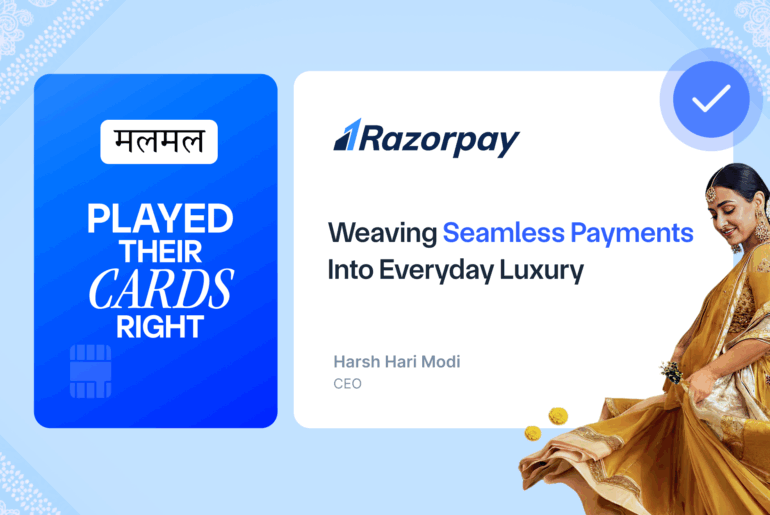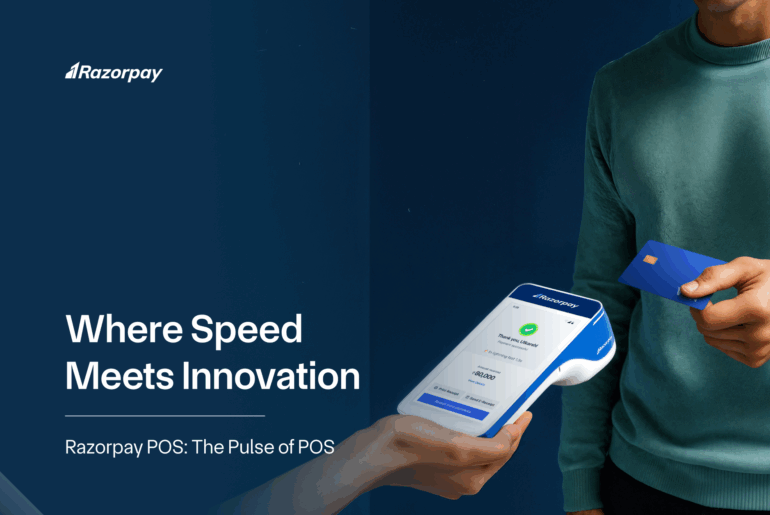As a business owner, you often hear the terms POP and POS used interchangeably. But understanding the POP vs POS difference is key to improving sales. The Point of Purchase (POP) is where buying decisions are made—like a promotional display or shelf in a store. The Point of Sale (POS) is where the transaction takes place—like your billing counter or POS machine.
For example, in a retail store, a branded snack display at the aisle end is a POP. But the billing counter with a POS machine where the customer pays is the POS. Knowing how to use both effectively can help boost conversions and buying experience.
Table of Contents
Key Differences Between POP and POS
|
Feature |
POP |
POS |
|
Location |
Spread across the store—shelves, displays, aisle ends |
Fixed—billing counter, checkout page, POS machine |
|
Purpose |
Encourages buying decisions |
Completes the sale and collects payment |
|
Customer Interaction |
Passive—visual engagement with product |
Active—direct interaction to make a payment |
|
Example |
Coffee mug displayed near the entrance of a gift store |
Checkout counter where the mug is scanned and billed |
What is Point of Purchase (POP)?
The Point of Purchase is where your customer decides whether or not to buy a product. It could be a shelf, an aisle, or a promotional stand inside your store. This is where the product catches their eye and makes them want to buy it.
You’ve seen POP displays in action: banners, demo counters, standees, or shelf talkers highlighting discounts or product benefits. Their goal is simple—to catch attention and push last-minute decisions before the customer reaches the billing counter.
Think about a supermarket placing candies and chewing gum near the checkout. Or a laptop store showcasing the latest laptop models right at the entrance. These are classic examples of POP—designed to guide and influence purchase behaviour at just the right moment.
What is Point of Sale (POS)?
The Point of Sale is where your customer completes the purchase. It could be your store’s billing counter, an online checkout page, or even a handheld mPOS device at a stall.
Modern POS systems go beyond just card swipe machines or cash registers. They include QR code scanners, UPI payment options, and even digital wallets—making checkout faster and more convenient for your customers.
A complete POS setup also includes software that helps you track sales, manage stock, generate invoices, and monitor daily performance. For example, in a clothing store, the POS isn’t just the counter—it’s also the system that records your customer’s order, prints the bill, and updates your inventory in real time.
The Role of POP in a Sales Strategy
POP helps you grab your customer’s attention and encourage impulse buys. It’s used to influence decisions at the right moment—before the customer heads to checkout. Businesses use POP displays like product stands, posters, discount boards to make products stand out and encourage customers to buy them.
For example, many supermarkets place bread close to butter or jam in grocery stores to encourage customers to buy them as a pair.
POP isn’t limited to physical stores. Many e-commerce sites use ‘Recommended for You’ sections as a digital version of POP to influence what your customer adds to the cart.
The Role of POS in a Sales Strategy
The POS is where your customer pays and completes the transaction, so the process must be quick, smooth, and easy to use. Modern POS systems do more than just billing. They help you collect customer data, run loyalty programmes, and create a seamless checkout experience. This makes it easier to understand buying habits and reward repeat customers.
For example, a retail store with an efficient POS system can speed up billing, avoid long queues, and even offer cashback or discounts during checkout. That’s a win for both you and your customer.
Today, many businesses use UPI, contactless cards, mPOS, and automated billing to make the checkout process faster and more convenient.
POP and POS Best Practices
POP Best Practices:
-
Use eye-catching visuals to grab attention quickly
-
Place products strategically—at eye level or near high-traffic areas
-
Highlight limited-time offers to create urgency
POS Best Practices:
-
Ensure quick checkout to avoid long queues
-
Offer multiple payment options—UPI, cards, cash, contactless
-
Give personalised offers at billing—like loyalty discounts or cashback deals
For example: A makeup store places its newest collection on a display right near the mirror section to catch attention —this is a classic example of a POP strategy. At checkout, it uses self-service POS kiosks that accept UPI and show cashback offers on select purchases. This helps the customer make a quick decision and pay without standing in long queues.
Choosing Between POP and POS for Your Business
Knowing when to focus on POP or POS depends on your business type and sales goals. If your aim is to attract attention and build brand visibility, invest more in POP. But if smooth and fast transactions are your priority, improving your POS system should come first.
For example, FMCG (Fast-moving consumer goods) brands depend heavily on POP—like banners, standees, and shelf displays—to influence impulse buys. On the other hand, e-commerce platforms focus on strong POS systems with features like saved cards, UPI, and instant checkout for a better user experience.
To make the most impact:
-
Use POP to grab attention and create urgency with deals or new arrivals
-
Make sure your POS offers quick billing, digital payment options, and easy returns
-
Regularly test and update both systems based on customer feedback
Balancing both helps you attract customers and keep them coming back.
Conclusion
POP and POS may serve different purposes, but they work best when used together. While POP helps attract attention and influence buying decisions, POS ensures fast and smooth transactions. A balanced approach—using the right displays to draw interest and an efficient POS system to complete the sale—can boost your revenue and improve customer satisfaction.
Take a moment to assess your business needs. Whether you’re in retail, food service, or e-commerce, aligning your POP and POS strategy can lead to better sales and a better customer experience.
Frequently Asked Questions (FAQs)
1. Can a business use both POP & POS together?
Yes, and it’s often the most effective approach. Using both together helps improve sales and customer satisfaction.
2. What are the benefits of a good POS system?
A good POS system speeds up billing, reduces queues, accepts various payment methods (like UPI, cards, and wallets), and helps you track sales and inventory.
3. Which is more effective for increasing impulse purchases, POP or POS?
POP is more effective for triggering impulse purchases. Displays placed at eye level or near checkout areas catch attention and encourage last-minute buys.
4. Does POS only refer to checkout counters?
No. While POS often means a billing counter in a store, it also includes digital payment systems, mPOS devices, and online checkout pages. Anything that handles payment and finalises a sale falls under POS.



